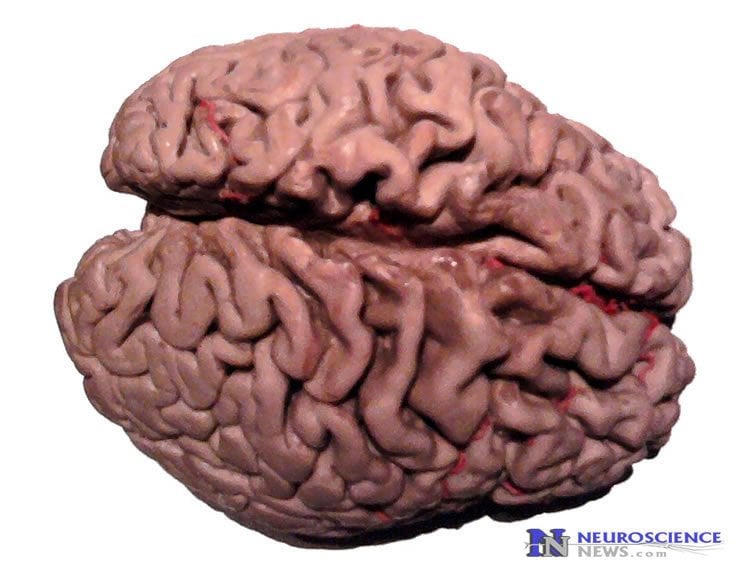Summary: According to researchers, odor identification tests could prove useful in predicting cognitive decline and detecting early stage Alzheimer’s disease.
Source: Columbia University Medical Center.
Test may offer low-cost alternative to other Alzheimer’s tests.
Researchers from Columbia University Medical Center (CUMC), New York State Psychiatric Institute, and NewYork-Presbyterian reported that an odor identification test may prove useful in predicting cognitive decline and detecting early-stage Alzheimer’s disease.
Their two studies, presented at the Alzheimer’s Association’s International Conference in Toronto, Canada, suggest that the University of Pennsylvania Smell Identification Test (UPSIT) may offer a practical, low-cost alternative to other tests.
In one study, researchers administered UPSIT to 397 older adults (average age of 80 years) without dementia from a multiethnic population in northern Manhattan. Each of the participants also had an MRI scan to measure the thickness of the entorhinal cortex–the first area of the brain to be affected by Alzheimer’s disease.
Four years later, 50 participants (12.6 percent) had developed dementia, and nearly 20 percent had signs of cognitive decline.
The researchers found that low UPSIT scores, but not entorhinal cortical thickness, were significantly associated with dementia and Alzheimer’s disease. (Low UPSIT scores indicate decreased ability to correctly identify odors.)
Low UPSIT scores, but not entorhinal cortical thickness, also predicted cognitive decline, although entorhinal cortical thickness was significantly associated with UPSIT score in those who transitioned to dementia.
“Our research showed that odor identification impairment, and to a lesser degree, entorhinal cortical thickness, were predictors of the transition to dementia,” said Seonjoo Lee, PhD, assistant professor of clinical biostatistics (in Psychiatry) at CUMC and presenting author. “These findings support odor identification as an early predictor, and suggest that impairment in odor identification may precede thinning in the entorhinal cortex in the early clinical stage of Alzheimer’s disease.”
In another study, researchers from CUMC evaluated the usefulness of UPSIT and tests that measure the amount of amyloid in the brain (in higher amounts, the protein forms plaques in the brains of those with Alzheimer’s disease) in predicting memory decline.
The researchers administered UPSIT and performed either beta amyloid PET scanning or analysis of cerebrospinal fluid in 84 older adults (median age of 71 years). Of these, 58 participants had mild cognitive impairment. The researchers followed the participants for at least six months.
At follow-up, 67 percent of the participants had signs of memory decline. Testing positive for amyloid with either method, but not UPSIT score, predicted cognitive decline. However, participants with a score of less than 35 were more than three times as likely to have memory decline as those with higher UPSIT scores.
“Our research suggests that both UPSIT score and amyloid status predict memory decline,” said William Kreisl, MD, the Boris and Rose Katz Assistant Professor of Neurology (in the Taub Institute) at CUMC and a neurologist at NewYork-Presbyterian/Columbia. “Younger age, higher education, and shorter follow-up may explain why UPSIT did not predict decline as strongly in this study as in previous studies. Although more research is needed, odor identification testing, which is much less expensive and easier to administer than PET imaging or lumbar puncture, may prove to be a useful tool in helping physicians counsel patients who are concerned about their risk of memory loss.”
Current methods are only capable of clinically detecting Alzheimer’s disease in the later stages of its development, when significant brain damage has already occurred. Brain imaging with PET may show the buildup of amyloid plaques in the brain years before symptoms appear, although this method is expensive. Beta amyloid can also be detected in cerebrospinal fluid through a lumbar puncture, and brain PET imaging of abnormal tau protein is rapidly advancing through research.

“Our study adds to the growing body of evidence demonstrating the potential value of odor identification testing in the detection of early-stage Alzheimer’s disease,” said D.P. Devanand, MD, professor of psychiatry (in Neurology and in the Gertrude H. Sergievsky Center) at CUMC and senior author of both studies.
“Using other biomarkers of Alzheimer’s disease to detect the disease at an earlier stage–which have the potential to be lower-cost and non-invasive–could lead to dramatic improvements in early detection and management of the disease,” commented Heather Snyder, PhD, director of medical and scientific operations at the Alzheimer’s Association, in a statement.
Funding: “Predictive Utility of Entorhinal Cortex Thinning and Odor Identification Test for Transition to Dementia and Cognitive Decline in an Urban Community Population,” by Seonjoo Lee, PhD, et al., was funded by the National Institute on Aging, grants K01AG051348, R01AG034189, R01AG037212, K99/R00AG042483, R01AG041795.
“Both Odor Identification and Amyloid Status Predict Memory Decline in Older Adults” by William Kreisl, MD, et al., was funded by the National Institute on Aging, grants R01AG17761 and R01AG041795.
Source: Karin Eskenazi – Columbia University Medical Center
Image Source: This NeuroscienceNews.com image is in the public domain.
Original Research: The study will be presented at Alzheimer’s Association International Conference, July 22-28, Toronto, Canada.
[cbtabs][cbtab title=”MLA”]Columbia University Medical Center. “Smell Test May Predict Early Stages of Alzheimer’s Disease.” NeuroscienceNews. NeuroscienceNews, 26 July 2016.
<https://neurosciencenews.com/alzheimers-smell-test-4737/>.[/cbtab][cbtab title=”APA”]Columbia University Medical Center. (2016, July 26). Smell Test May Predict Early Stages of Alzheimer’s Disease. NeuroscienceNews. Retrieved July 26, 2016 from https://neurosciencenews.com/alzheimers-smell-test-4737/[/cbtab][cbtab title=”Chicago”]Columbia University Medical Center. “Smell Test May Predict Early Stages of Alzheimer’s Disease.” https://neurosciencenews.com/alzheimers-smell-test-4737/ (accessed July 26, 2016).[/cbtab][/cbtabs]







